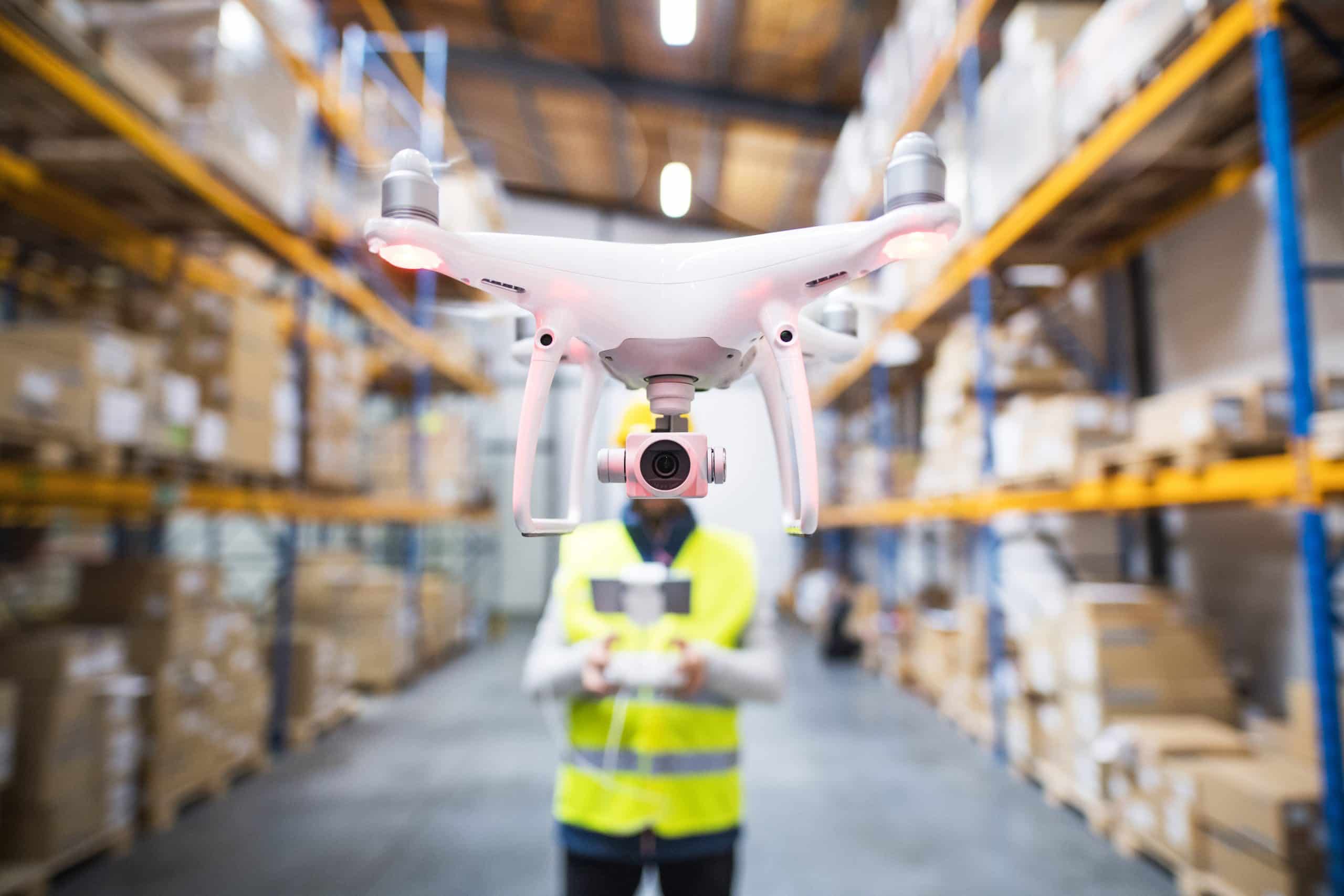How Can Smart Drones Aid UK Firefighters in Wildfire Detection and Management?

In the midst of a warming planet, the frequency and severity of wildfires are on the rise. The United Kingdom, like many other nations across the globe, has been grappling with a growing number of forest fires. Firefighters, who are the first line of defense against this escalating menace, are constantly seeking innovative solutions for early fire detection and management. One such cutting-edge technology that has been making waves in the firefighting realm is the use of Unmanned Aerial Vehicles (UAVs), or more commonly known as drones. These smart drones, equipped with advanced sensors and detection systems, are revolutionizing the way firefighters combat wildfires.
The Role of Drones in Fire Detection
Drones have emerged as a potent tool in the fire detection arsenal. They offer a bird’s-eye view of the affected area, providing real-time data and crucial insights that are often impossible to obtain through traditional means.
A lire aussi : What’s the Latest in High-Density Energy Storage for Renewable Power Systems?
The drone-based detection systems employ sophisticated sensors that can detect temperature changes and even the slightest hint of smoke. This early detection capability can be a game-changer in wildfire management.
A key feature of these drone systems is their color detection ability. The sensors on-board these UAVs can process the color pixels from the captured images to distinguish between burning areas and safe zones.
Dans le meme genre : Can AI-Powered Image Recognition Assist UK Conservationists in Wildlife Monitoring?
Moreover, these drones can fly over a large forest area, scanning for potential fire threats. This is especially useful in the UK, where vast tracts of land are often inaccessible or too dangerous for firefighters to reach.
Drones and Data Analysis: An Unbeatable Combination
When it comes to managing wildfires, data is king. The more data you have, the better equipped you are to combat the fires. Drones are particularly adept at collecting a wide array of data, which can then be analyzed to formulate effective firefighting strategies.
The drones are equipped with advanced data systems that can capture high-resolution images and videos. These visuals can then be analyzed to understand the spread and intensity of the fire.
One of the key strengths of drones is their ability to conduct thermal imaging. This technology can pinpoint the exact locations of hotspots within a forest, even through thick smoke or at night. This data can be invaluable to firefighters on the ground, and can significantly enhance their firefighting efforts.
Additionally, drones allow for continuous monitoring of the wildfire. By flying over the fire at regular intervals, the UAVs can provide updates on the fire’s progression, helping firefighters to stay a step ahead.
Incorporating Drone Technology in Firefighting Operations
Firefighting operations have traditionally been grounded. But the advent of drone technology offers the potential to take these operations to new heights.
Drones can not only detect fires but can also aid in firefighting operations. Certain UAV models are equipped to carry payloads such as water or fire-retardant material. These drones can make precise drops at the heart of the fire, helping to douse the flames.
In addition to aiding in active firefighting, drones can also help in post-fire recovery. By mapping the affected area, drones can help identify areas that require immediate attention, helping to speed up the recovery process.
Scholarly Insights into Drone-Based Fire Management
The growing interest in drone technology for wildfire management is reflected in the surge of scholarly research on the subject. Scholars are actively exploring how to optimize drone-based detection and firefighting systems.
One area of focus is the development of advanced sensors that can more accurately and quickly detect fires. This includes improving the color detection capabilities of drones, to allow for more precise identification of fire-affected areas.
Another promising area of research is the use of Artificial Intelligence (AI) in drone systems. AI can enhance the data analysis capabilities of drones, facilitating more accurate predictions about the fire’s behavior.
Moreover, scholars are also examining the legal and ethical implications of drone use in firefighting. As with any new technology, it is crucial that drone usage is regulated to ensure it is used responsibly and effectively.
In conclusion, drones offer an exciting new frontier in wildfire detection and management. As this technology continues to evolve, it is set to play an increasingly vital role in helping UK firefighters combat the growing threat of wildfires.
Leveraging Deep Learning and Internet of Things (IoT) in Drone-Based Wildfire Detection
In an era where deep learning and the Internet of Things (IoT) are making significant inroads into various sectors, it’s time we start leveraging these technologies in the realm of wildfire detection and management. The amalgamation of these advanced technologies with drones could have a transformative impact on firefighting operations.
Deep learning, a subset of artificial intelligence, can help improve the data analysis capabilities of drones. By training a deep learning model on historical fire data, we can enable drones to predict the potential spread and behavior of a forest fire in real time. For instance, such a model could identify patterns in how fires typically spread in certain weather conditions or types of vegetation. This could empower firefighters with foresight, enabling them to strategically allocate resources and personnel.
Similarly, the IoT could further enhance the capabilities of drone-based wildfire detection. For instance, drones could be integrated with other IoT devices such as ground-based sensors or satellite systems. This could create a holistic, cyber-physical system for wildfire detection and monitoring, providing a comprehensive view of the forest fire.
The integration of deep learning and IoT with drone technology is still in its nascent stages. However, as per recent proceedings from the International Conference on Unmanned Aerial Systems, researchers are optimistic about the potential of this integration to significantly improve wildfire detection and management.
Addressing the Legal and Ethical Dimensions of Drone Use in Firefighting Operations
As unmanned aerial technology is becoming an integral part of firefighting operations, it’s imperative to address the legal and ethical aspects of drone use. This has emerged as a focus area in recent scholarship, as highlighted in a number of articles published on Google Scholar.
Important considerations include privacy, as drones often capture high-resolution images and videos of large swathes of land. It’s crucial to ensure that this technology is not misused for surveillance or other non-firefighting purposes.
Furthermore, drone regulations need to be clearly defined and communicated to all stakeholders. This includes guidelines around where drones can fly, how high they can go, who can operate them, and how the data they collect should be stored and used.
In addition to legal and ethical considerations, safety concerns also need to be addressed. For instance, it’s important to ensure that drones do not interfere with other aircraft involved in firefighting operations, such as helicopters or planes dropping water or fire retardant.
To tackle these challenges, interdisciplinary collaboration is key. Firefighters, drone manufacturers, legal experts, ethicists, and policymakers must all work together to ensure that drone technology is used responsibly and effectively in the context of wildfire detection and management.
Conclusion: The Future of Firefighting Operations
In conclusion, drones equipped with advanced sensors and powered by technologies like deep learning and the Internet of Things offer the potential to revolutionize wildfire detection and management in the UK. These technologies provide a bird’s-eye view of forest fires, enabling real-time detection, monitoring, and even firefighting.
The use of drones can enhance the safety of firefighters by providing data about the size and intensity of fires, and by delivering fire retardant materials to precise locations. Moreover, they can aid in post-fire recovery by mapping the affected area and identifying zones that need immediate attention.
While the potential of drone technology in firefighting operations is clear, equally clear is the need for careful regulation and responsible usage. As drone technology continues to evolve, so should our understanding and management of the legal, ethical, and safety implications of its use.
As we grapple with the growing threat of forest fires, drones offer us a powerful tool to combat this menace. By leveraging the potential of this technology responsibly and effectively, we can pave the way for more efficient and effective fire management in the UK, and indeed, around the world.
